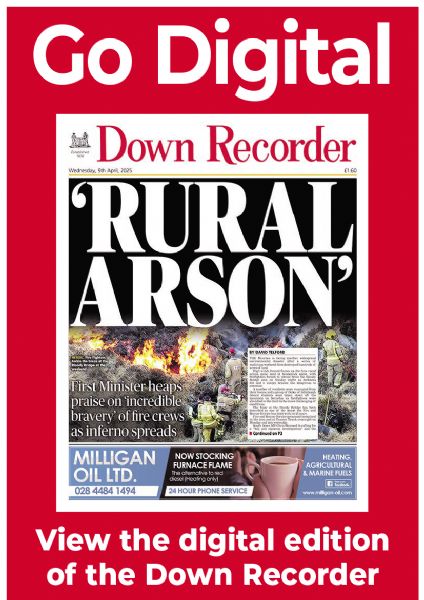Appeal to planners to retain church building
Appeal to planners to retain church building
1 August 2018
PLANNERS will this morning be urged to overturn a recommendation not to allow a church building in Saul to remain in place.
They are recommending an application to retain a pastoral centre at St Patrick’s Road in the village should be refused as the proposal is contrary to rural planning policy and is impacting on nearby properties.
Located adjacent to Saul Parochial House and St Patrick’s Church — which both enjoy protected status — planners say the planning application does not reflect the building in terms of its scale, height, massing and alignment and there are no overriding reasons why it should be allowed to remain in place.
Temporary two-year planning permission for the building was granted in 2016 with planners confirming the Department for Communities Historic Environment Division has expressed concern about the “adverse impact” the pastoral hall is having on the setting of the nearby parochial house in particular.
Planning papers state the temporary permission for the pastoral building was granted despite planners recommending it should be refused. In addition, planners say politicians should be aware that temporary permission is granted to allow a “period of time in which to come up with a permanent and more appropriate solution to the accommodation needs of the parish”.
A request to allow the building to remain in place will be made during this morning’s meeting of Newry, Mourne and Down Council’s Planning Committee by Cllr Gareth Sharvin.
A member of St Patrick’s Parish, he said he fully understands the value of the centre to the parish community and the support it provides in bringing a rural community together.
Three years ago, he made a presentation to the local authority planning committee on the benefits the pastoral centre would bring to the community, stretching from Saul to Carlin and Ballycruttle and everywhere in between.
He said temporary planning approval for the building enabled the Saul centre to host pastoral meetings, coffee mornings each month after mass and support services for the public.
“I am disappointed that the planners have taken a view for refusal straightaway, as the consultation response from Historic Building and Monuments clearly states their support in permitting a further temporary extension for the centre,” explained Cllr Sharvin.
“The letter further states that the temporary extension of permission would enable formal meetings to take place to resolve any issues that the department may have.”
Cllr Sharvin said planners are recommending the two-year permission should now be refused as the centre is contrary to sustainable development in the countryside and there are no overriding reasons why this development is essential in this rural location and could not be located within a settlement and that is does not respect the listed building.
“I do not accept the centre is impacting on any listed building,” he declared. “For anyone driving along St Patrick’s Road in either direction, you cannot visually see the centre. It is covered by large, mature trees, or by the natural hill that the church sits on. The only time that the centre is seen by the public is when you drive up to the Parochial House.”
Cllr Sharvin will argue during his address this morning that planners have not considered the needs of those most affected — parishioners and the local community — if planning approval is refused.
He added: “Historic Buildings are fully cognisant of the necessity for a hall within the vicinity for the local community. By the nature of the pastoral centre, it reflects the close association between parish and community, the Parochial House and St Patrick’s Church.
“The facility is essential for the well-being of a broad community base and its need arise out of a rapidly changing relationship between church and the public.
“The community has benefitted greatly from the success of the present provision and, with that experience, is now in a position to better assess future needs.”
Cllr Sharvin said he hopes full planning approval will be granted, suggesting if this is not possible, permission to allow the centre to remain in place for a further two years should be granted.


